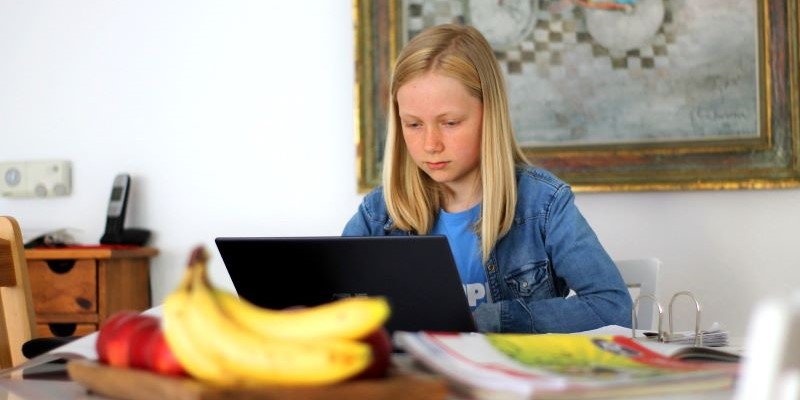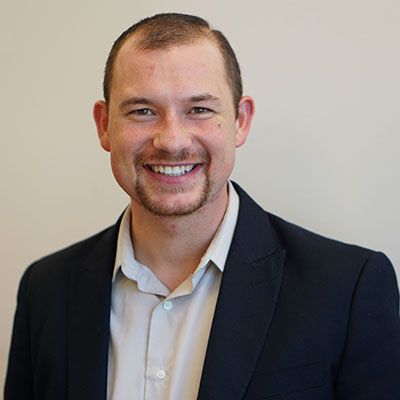Practically overnight, the coronavirus pandemic turned at-home learning from a fringe practice into a global phenomenon. As this grand K–12 experiment has unfolded, I’ve had the interesting fortune of seeing it not just through my role as a researcher, but also through my experiences with my own children. Learning at home has definitely brought its share of struggles to our family; but for me, my wife, Mary, and our three kids, there have also been some delightful upsides.
To be clear, distance learning is a struggle for many families, and the circumstances that make it work for my family are not the norm. Nonetheless, our experience has led me to wonder what it would take to make the more student-centered aspects of our experience available to all families even after campuses can fully reopen. Below I highlight some of the positives we’ve experienced and then discuss the potential for these benefits to become more commonplace post-COVID-19.
Integrating school into family activities
As a parent in times prior to COVID-19, I often felt out of touch with what my kids were learning and experiencing at school. Friday folders, class newsletters, parent-teacher conferences, and report cards give only opaque glimpses into the day-to-day; and asking my kids straight up “How was school today?” rarely elicits the information I’m hoping for.
Now, with all learning happening at home, we know what our kids are working on every day because we’re with them as they learn and we’re the ones they go to for help. With this visibility has come exciting ways to connect what they are learning in school with activities and experiences we have as a family.
For example, when our kids’ science curriculum took a course through astronomy, I set up my telescope in our backyard on a Friday evening so we could gaze at the rings of Jupiter and the moons of Saturn. Shortly after our oldest read about John Glenn’s historic first trip to space, we watched live the historic launch of the first manned SpaceX Dragon capsule together and talked about the significance of each of the two events.
Curtailing the quest for “right” answers
During the spring installment of distance learning, one of our children had an assignment to read a primary source and a secondary source about a historical event and then compare and contrast them on a worksheet. The assignment led to anguished tears when he got frustrated over not being able to easily find and highlight the “main idea and supporting details” in the primary source and when he couldn’t figure out how to fill in the blank spaces on the worksheet.
As I coached him through the assignment, it bothered me how much he worried about getting the “right” answers on the assignment and had no sense of what the assignment was actually trying to help him learn. I explained to him that the teacher probably cared more about the thinking and insight the assignment was trying to lead him to than about whether he got the “right” answers. We then had a great discussion about the differences between primary and secondary sources. By the end of the discussion, it was fairly easy for him to finish the worksheet.
Learning self-management
At the front end of the pandemic this spring, Mary worked with our kids to develop a rough schedule for the day and a checklist of essential things that needed to get done. The schedule and checklists covered their school work but also included things like chores, piano practice, exercise, and reading time. When school ended, we kept the daily checklists—sans school work—for the summer.
Now, with the first two weeks of the fall semester under our belts, I’m pleased to see that we don’t have to tell our kids when to wake up, when to start their school work, or what to do at any given moment. They know how to look up the assignments they need to work on each day. They then create their own custom daily checklist on personal whiteboards we’ve given them, and in doing so, they decide for themselves what to work on first, when to take breaks, and when to mix up school work with chores and other daily activities.
In conventional classrooms, it’s easy for kids to fall into the modus operandi of sit and be quiet and wait for someone to tell you what to do. In contrast, my kids are now learning some of the self-direction and self-management skills they will need as adults. For example, they are learning to do their hardest assignments first so they can get them out of the way rather than putting them off until the end of the day when they’re ready to be done.
Student-centered learning possibilities
In general, what pleases me about distance learning is how our children’s education is much more student-centered. When they need extra time or help with an assignment or activity, we can give it to them. When they finish assignments quickly, they aren’t waiting around until the teacher and the rest of the class are ready to move on. They have more time and energy to learn and do things that interest them in addition to learning the core content for their grade levels. The lines between formal learning and the informal learning that occur in the rest of life are blurred. Lastly, they aren’t experiencing some of the common “institutionalizing” norms of conventional schooling, such as ranking and comparison with classmates, the synonymizing of good behavior with conformity, and the expectation that your day is directed by adults.
I want to reiterate that I fully recognize that many families are struggling right now with distance learning. The flexibility Mary and I have that makes our arrangement workable is not the reality for most families, and therefore, I would not prescribe it as a universal solution. But, our experience has led me to wonder what it would take to make the more student-centered aspects of our experience available to all families even after campuses can fully reopen.
The pods, microschools, and homeschooling co-ops that have sprung up across the country seem at first glance like mere stop-gap solutions. Parents have turned to them because they need someone to watch their children while they work, or they worry their kids are missing out on friends and enrichment activities when they’re learning at home all day. But I wonder if distance learning combined with pod-like arrangements (either organized by districts or funded by states) might actually be a model worth pursuing post-COVID-19.
For years, efforts to make schools more student-centered have been cannibalized by conventional teaching practices, bell schedules, batch processing, ranking, and sorting. Maybe this massive experiment in K–12 education is our moment of inspiration to foster student-centered learning in totally new ways.


